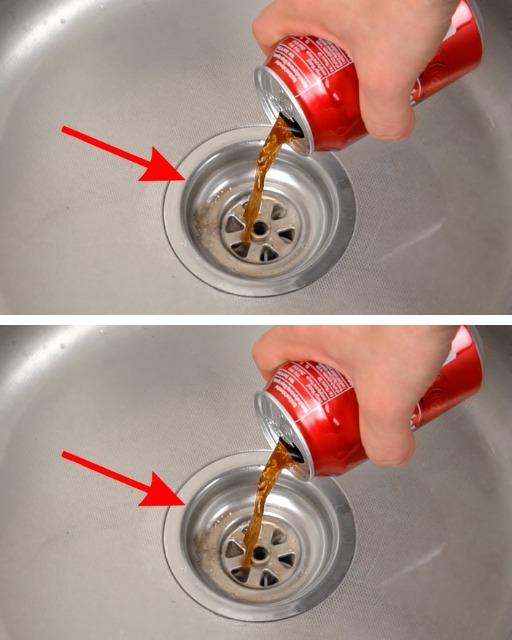ADVERTISEMENT
The Trick Plumbers Use to Clean the Drain of Pipes: Simple Solutions to Clogged Drains
A clogged drain can be one of the most annoying issues to deal with in your home. Whether it’s a slow-draining sink, a backed-up shower, or a toilet that refuses to clear properly, we’ve all been there. The good news is, plumbers have a trick or two up their sleeves that can help tackle the most stubborn drain blockages—and some of these methods are surprisingly simple and affordable for you to try at home.
In this article, we’ll take a look at the trick plumbers use to clean the drain of pipes and offer a step-by-step guide on how you can use these methods to fix your clogged drain and keep your pipes clean in the future.
What Causes Clogged Drains?
Before we dive into how to fix clogged drains, let’s first understand what causes them. Clogs usually form when debris, grease, soap scum, hair, or food particles accumulate over time and get stuck in the pipes. In kitchens, it’s common for grease and food waste to build up, while in bathrooms, hair and soap scum are frequent culprits.
Over time, these buildups restrict the flow of water, causing slow drainage or complete blockages. In some cases, clogs can even cause foul odors, leaks, or potential damage to your plumbing system.
The Plumber’s Trick to Clean Drains
Plumbers have a tried-and-true method for tackling tough clogs that is effective, simple, and doesn’t require harsh chemicals. The best part? You can try it yourself with a few basic tools and household ingredients!
1. Boiling Water Method
One of the simplest and most effective methods plumbers use involves boiling water. It may seem too basic to work, but it’s surprisingly effective for loosening up grease, soap scum, and other debris that cause clogs.
How to Use Boiling Water:
- Step 1: Boil a kettle of water.
- Step 2: Carefully pour the boiling water directly into the drain in stages. Pour about half of the water, wait for a few seconds, and then pour the remaining half.
- Step 3: Let the hot water sit for about 5–10 minutes. This will loosen up the grease and debris in the pipes, helping to clear the clog.
This method is especially effective for minor grease and soap clogs. If the drain still doesn’t work, you can try the next trick.
2. Baking Soda and Vinegar
Baking soda and vinegar are household staples that have long been known for their natural cleaning properties. Plumbers often use this powerful combination to clear drains, as the chemical reaction between the two ingredients helps break up clogs, clean pipes, and eliminate odors.
How to Use Baking Soda and Vinegar:
- Step 1: Pour about 1 cup of baking soda directly into the drain.
- Step 2: Follow it with 1 cup of white vinegar. You will hear some fizzing and bubbling as the reaction occurs—this is a good sign!
- Step 3: Cover the drain with a cloth or plug it if possible, to trap the reaction inside the pipe. Let it sit for about 10–15 minutes to work its magic.
- Step 4: After the waiting period, flush the drain with boiling water (as mentioned earlier) to help clear the debris and finish cleaning the pipes.
This method is great for stubborn soap scum, hair, and general gunk buildup. It’s natural, safe, and non-toxic, so it’s a great alternative to harsh chemical cleaners.
3. Plunger Power
For a clog that simply won’t budge, plumbers often turn to the trusty plunger. A plunger works by creating pressure and suction, helping to break up and dislodge the clog.
How to Use a Plunger:
- Step 1: Make sure there’s enough water in the sink or bathtub to cover the head of the plunger.
- Step 2: Place the plunger over the drain and ensure it forms a tight seal around the edges.
- Step 3: Push down and pull up rapidly and repeatedly for about 15–20 seconds.
- Step 4: Check if the water begins to drain. If it does, you’ve successfully dislodged the clog.
- For Complete Cooking STEPS Please Head On Over To Next Page Or Open button (>) and don’t forget to SHARE with your Facebook friends
If the water starts to drain slowly but doesn’t completely clear, repeat the proc
